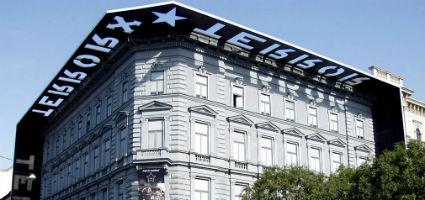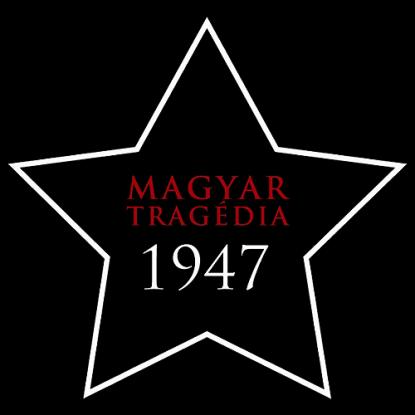2024. April 26. Friday
House of Terror Museum - Budapest
 |
Address: 1062, Budapest Andrássy út 60.
Phone number: (1) 374-2600
E-mail: muzeum@terrorhaza.hu
Opening hours: Tue-Sun 10.00-18.00
|
The exhibition has closed for visitors.
2007.09.27. - 2008.05.01.
Museum tickets, service costs:
|
Ticket
(valid for the temporary exhibitions, the permanent exhibition is not included )
|
1000 HUF
|
/ capita
|
|
Ticket for adults
|
2000 HUF
|
|
|
Group ticket for adults
(from over 20 people)
|
1500 HUF
|
/ capita
|
|
Ticket for students
(EU citizens from the age of 2 to 26 or with ISIC Card )
|
1000 HUF
|
|
|
Group ticket for students
(from over 20 people)
|
800 HUF
|
/ capita
|
|
Ticket for pensioners
(EU citizens from the age of 62 to 70)
|
1000 HUF
|
|
|
Group ticket for pensioners
(from over 20 people)
|
800 HUF
|
/ capita
|
|
Supplementary fee
(valid for the temporary exhibitions, extra ticket for the permanent exhibition )
|
500 HUF
|
/ capita
|
|
Group guide
(max. 30 people)
|
6000 HUF
|
|
|
Group guide
(2 groups, max. 60 people)
|
8000 HUF
|
|
|
Group guide
(max. 30 people)
|
8000 HUF
|
|
|
Group guide
(2 groups, max. 60 people)
|
15000 HUF
|
|
|
Audio guide
(in English, German)
|
1500 HUF
|
The true goal of the founders of multinational Czechoslovakia, created in 1918, was to change it into a racially pure Slavic national state, and they already took steps in the inter-war years to achieve this aim. The real opportunity, however, for President Eduard Benes's Czech Government-in-Exile in London, came at the end of World War II. Based on Pan-Slav solidarity, they had also the Soviet Union's backing for the accomplishment of their plan. Beside the three million Germans, those six hundred thousands Hungarians constituted the greatest obstacle to a Slavic national state, who lived in the country's eastern half, in Slovakia.

Eduard Benes and his London government, together with the Muscovite communist émigrés, arrived at Kassa via Moscow on April 3, 1945. That is where the new Czechoslovak government was established, and where the government's programme was proclaimed. Under its terms, the principle of collective guilt was to be applied against the German and Hungarian minorities.
The primary "sources of law" for the anti-German and anti-Hungarian measures were the presidential decrees (the so-called "Benes Decrees"). Of the 143 decrees, 13 dealt directly with the status of the German and Hungarian minorities. The liquidation of the Hungarian minority was launched by the forcible expulsion of those persons, who had arrived from Trianon Hungary after 1938 and the so-called "war criminals." This process affected some 31,000 Hungarians. However, the expulsion of Hungarians whose ancestors had been living in those regions since time immemorial, was not that simple. Because of the veto of the Western Allies, Czechoslovak policy had to shift its emphasis to a population exchange. Under the terms of the Czechoslovak Hungarian population exchange agreement forced on Hungary and signed on February 27, 1946, Czechoslovakia could transfer as many Hungarians to Hungary as there were Slovaks wanting voluntarily to resettle in Czechoslovakia.
The agreement also made possible the unilateral expulsion of Hungarians deemed by the Slovak peoples' courts to be war criminals. Moreover, the Czechoslovak government attempted to put pressure on the Hungarian government by renewing the deportations that had been carried out in 1945. It has been estimated that 60-100 thousand Hungarians had been transported to Czechoslovakia and Moravia for forced labour. The majority of the deportees had been distributed among Czech farmers by way of humiliating human auctions. At the same time, they also launched a "re-Slovakization" campaign. This was temporarily successful.
Because of repeated delays, implementation of the population exchange did not commence until April of 1947 and proceeded with interruptions until December of 1948.

Eduard Benes and his London government, together with the Muscovite communist émigrés, arrived at Kassa via Moscow on April 3, 1945. That is where the new Czechoslovak government was established, and where the government's programme was proclaimed. Under its terms, the principle of collective guilt was to be applied against the German and Hungarian minorities.
The primary "sources of law" for the anti-German and anti-Hungarian measures were the presidential decrees (the so-called "Benes Decrees"). Of the 143 decrees, 13 dealt directly with the status of the German and Hungarian minorities. The liquidation of the Hungarian minority was launched by the forcible expulsion of those persons, who had arrived from Trianon Hungary after 1938 and the so-called "war criminals." This process affected some 31,000 Hungarians. However, the expulsion of Hungarians whose ancestors had been living in those regions since time immemorial, was not that simple. Because of the veto of the Western Allies, Czechoslovak policy had to shift its emphasis to a population exchange. Under the terms of the Czechoslovak Hungarian population exchange agreement forced on Hungary and signed on February 27, 1946, Czechoslovakia could transfer as many Hungarians to Hungary as there were Slovaks wanting voluntarily to resettle in Czechoslovakia.
The agreement also made possible the unilateral expulsion of Hungarians deemed by the Slovak peoples' courts to be war criminals. Moreover, the Czechoslovak government attempted to put pressure on the Hungarian government by renewing the deportations that had been carried out in 1945. It has been estimated that 60-100 thousand Hungarians had been transported to Czechoslovakia and Moravia for forced labour. The majority of the deportees had been distributed among Czech farmers by way of humiliating human auctions. At the same time, they also launched a "re-Slovakization" campaign. This was temporarily successful.
Because of repeated delays, implementation of the population exchange did not commence until April of 1947 and proceeded with interruptions until December of 1948.
